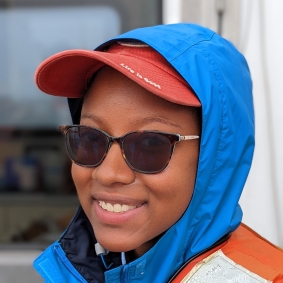Eight students will be presenting the summer work at the Ocean Sciences Meeting in March 2022!
Sunnidae Gallien, Coastal Carolina University
Class Year:
2022Mentor:
James Pierson, Ph.D.Project Title:
The Comparison of Acartia tonsa Lineages' Egg Hatching Rate and Morphological Differences in Females in the Chesapeake BayAbstract:
Acartia tonsa is a copepod species that lives in freshwater and saltwater areas of the Chesapeake Bay and is categorized as a cryptic species complex. Both freshwater (F) and saltwater (S) A. tonsa look nearly identical but there could be some differences that can characterize the F and S A. tonsa as individual species. The F and S A. tonsa cannot reproduce together in the lab, which implies that they cannot cross breed in the wild. This study investigated the morphometrics of females and the egg hatching rates of the F and S A. tonsa to find those differences, with hand drawn illustrations to visualize A. tonsa basic anatomy and understand what external anatomy characteristics would be measured for the morphometrics. For about four weeks, the F culture had contracted parasitic ciliates and couldn’t be used in this experiment, so only data from the S culture has been gathered and analyzed. The S culture underwent two hatching experiment trials and were photographed for morphometric analysis. The second trial showed that the S culture had an egg hatching rate of 0.27 eggs female^-1 day^-1, a hatching success of 0.53 (53%), and a clutch size of 18 eggs per egg-laying female. Previous studies have found the egg hatching rate and hatching success to be higher for the S culture than the F culture (Plough et al. 2018; Pierson et al. 2005). In addition, the general size for female prosome length is 0.9 mm for the S culture and 0.8 mm for the F culture (Plough et al. 2018). Supposedly salinity is a factor as to how the A. tonsa has separated itself in the Chesapeake.




